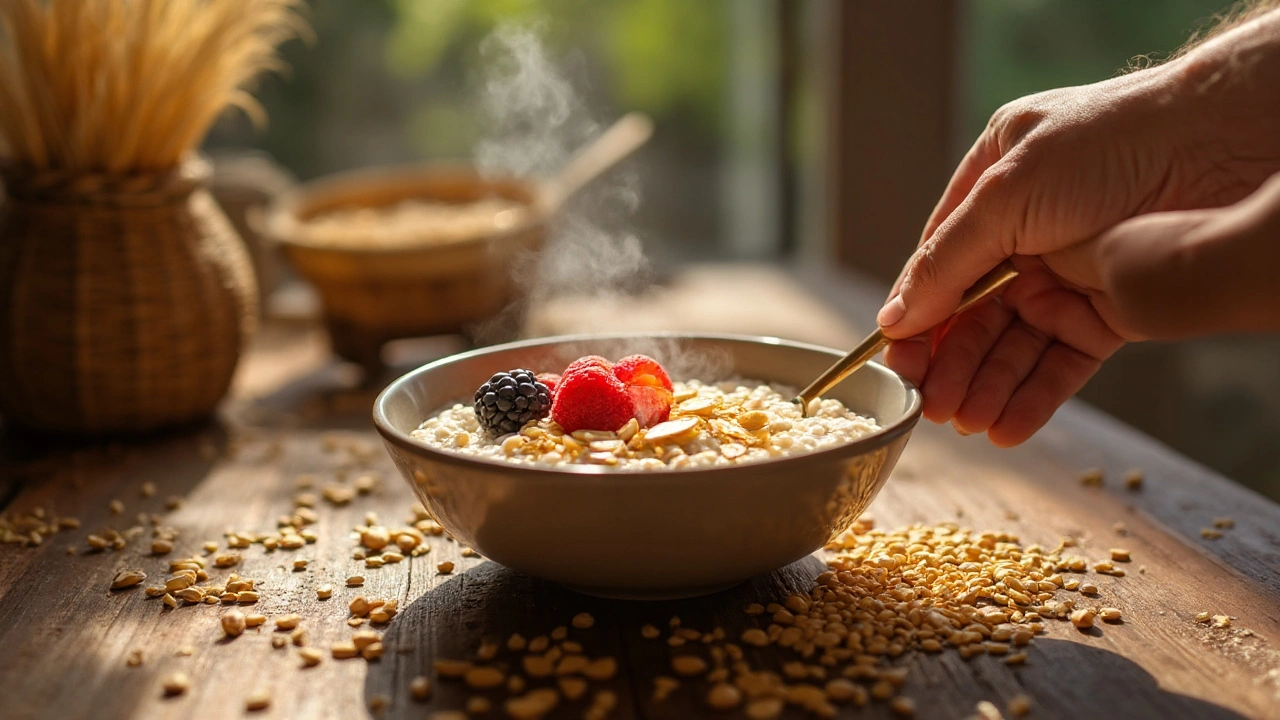Beta Glucan: What It Is and Why It Matters
Beta glucan is a type of soluble fiber found in oats, barley, mushrooms, and yeast. Unlike regular carbs, it dissolves in water and forms a gel‑like substance in your gut. That gel slows down digestion, which helps keep blood sugar steady, lowers bad cholesterol, and feeds good bacteria in your intestines. It also talks to your immune system, priming it to respond better to infections.
Top Health Benefits You Can Feel
First up, cholesterol. Studies show that 3‑5 grams of beta glucan each day can cut LDL (the “bad”) cholesterol by up to 10 %. The fiber binds to cholesterol in the gut and carries it out before it’s absorbed. Next, blood sugar. Because the gel slows glucose entry into the bloodstream, people with pre‑diabetes often see smaller spikes after meals when they add beta glucan to their diet.
Immune support is another big draw. Beta glucan activates white blood cells called macrophages and neutrophils. In simple terms, it teaches your immune cells to recognize and attack germs faster. This effect is why some mushroom extracts marketed for “immune boosting” rely heavily on beta glucan content.
How to Get Enough Beta Glucan Daily
Getting the right amount is easier than you think. A half‑cup of cooked oats delivers about 1 gram of beta glucan. A similar portion of cooked barley adds another gram. If you’re into mushrooms, a cup of cooked shiitake or maitake supplies roughly 0.5‑1 gram. For a quick boost, you can use beta glucan powder (often made from yeast) – just stir a teaspoon into a smoothie or yogurt.
Most research points to 3‑5 grams per day for cholesterol and blood sugar benefits. If you start with food sources, you’ll probably need a few servings a day. If that feels bulky, a supplement can fill the gap. Look for products that list the exact beta glucan amount per dose.
Safety-wise, beta glucan is gentle for most people. It can cause mild gas or bloating if you jump in with a big dose, so increase slowly. People on blood‑thinning medication should check with a doctor, as the fiber can affect clotting factors in rare cases.
Finally, a few practical tips: add oat bran to your morning cereal, mix barley into soups, toss sliced mushrooms into stir‑fries, or blend a scoop of yeast‑derived powder into your post‑workout shake. Pair beta glucan with healthy fats (like avocado or nuts) to improve satiety and keep cravings at bay.
Bottom line: beta glucan is a versatile, evidence‑backed fiber that can help you manage cholesterol, blood sugar, and immunity without a prescription. Start with small, food‑based portions, track how you feel, and consider a supplement if you need to hit the 3‑5 gram sweet spot. Your gut—and your whole body—will thank you.



